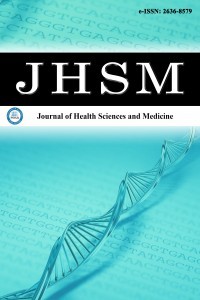Does the distance of the fixation points to the fracture affect healing in tibial shaft fractures treated with openable distal claw intramedullary nail?
Tibia Fracture, intramedullary nail, fracture healing
Does the distance of the fixation points to the fracture affect healing in tibial shaft fractures treated with openable distal claw intramedullary nail?
Tibia Fracture, intramedullary nail, fracture healing,
___
- Rosa N, Marta M, Vaz M, et al. Recent developments on intramedullary nailing: a biomechanical perspective. Annals Of The New York Academy Of Sciences 2017; 1408: 20-31.
- Wood GW. Intramedullary nailing of femoral and tibial shaft fractures. J Orthopaedic Sci 2006; 11: 657-69.
- Büyükkuşcu MÖ, Basılgan S, Mısır A, Polat A, Başar H. Factors associated with the development of screw cut-out after the fixation of intertrochanteric femoral fractures with a proximal femoral nail. J Health Sci Med 2021; 4: 170-5.
- Pourmokhtari, M. Principles of fixation with ınterlocking nailing. IJOS 2018; 16: 221-7.
- Bong MR, Kummer FJ, Koval KJ, Egol KA. Intramedullary nailing of the lower extremity: biomechanics and biology. J Am Acad Orthop Surg 2007; 15: 97-106.
- Camurcu Y, Sofu, H, Issin A, Koçkara N, Genç E, Çetinkaya M. Is talon tibial intramedullary nailing clinically superior compared to conventional locked nailing? JDRS 2017; 28: 152-7.
- Tekin SB, Mert A, Bozgeyik B. Which is superior in the treatment of AO Type 42A tibial shaft fracture? A comparison of talon intramedullary nailing and conventional locked intramedullary nailing. Ulus Travma Acil Cerrahi Derg 2022; 28: 1514-20
- Fortis AP, Dimas A, Lamprakis AA. Expandable nailing system for tibial shaft fractures. Injury 2008; 39: 940-6.
- Basaran T, Calbiyik M, Basaran PÖ, Hassa E, Ipek D. Blade expandable intramedullary nails for fixation of tibial shaft fractures. Acta Orthop Belg 2019; 85: 472-6.
- Zehir S, Şahin E, Zehir R. Comparison of clinical outcomes with three different intramedullary nailing devices in the treatment of unstable trochanteric fractures. Ulus Travma Acil Cerrahi Derg 2015; 21: 469-76
- Sipahioglu S, Zehir S, Sarikaya B, Isikan UE. Comparision of the expandable nail with locked nail in the treatment of closed diaphyseal fractures of femur. Nigerian J Clin Practice 2017; 20: 792-8.
- Beazley J, Mauffrey C, Seligson D. Treatment of acute tibial fractures with an expandable nailing system: A systematic review of the literature. Injury 2011; 42: 11-6.
- Ghafil D, Ackerman P, Baillon R, Verdonk R, Delince P. Expandable intramedullary nails for fixation of tibial shaft fractures. Acta Orthop Belg 2012; 78: 779-85.
- Eveleigh RJ. A review of biomechanical studies of intramedullary nails. Medical Engineering & Physics 1995; 17: 323-31.
- Yang TC, Tzeng YH, Wang CS, Lin CC, Chang MC, Chiang CC. "Ratio of fracture site diameter to isthmus femoral canal diameter" as a predictor of complication following treatment of infra-isthmal femoral shaft fracture with antegrade intramedullary nailing. Injury 2021; 52: 961-6.
- Penzkofer R, Maier M, Nolte A, et al. Influence of intramedullary nail diameter and locking mode on the stability of tibial shaft fracture fixation. Arch Orthop Trauma Surg 2009; 129: 525-31.
- Bedeir FK, Mohamed MAS, Hegazy MM, Zawam SH. Are small-diameter intramedullary nails enough for treating simple diaphyseal tibial fractures? A comparative study between small versus large nails. Eur J Trauma Emerg Surg 2022; 48: 3677-81.
- Donegan DJ, Akinleye S, Taylor RM, Baldwin K, Mehta S. IM nailing of tibial shaft fractures: size matters. J Orthop Trauma 2016; 30: 377-80.
- Manon J, Detrembleur C, Van de Veyver S, Tribak K, Cornu O, Putineanu D. Predictors of mechanical complications after intramedullary nailing of tibial fractures. Orthop Traumatol Surg Res 2019; 105: 523-7.
- Lam SW, Teraa M, Leenen LP, van der Heijden GJ. Systematic review shows lowered risk of nonunion after reamed nailing in patients with closed tibial shaft fractures. Injury 2010; 41: 671-5.
- Yayın Aralığı: Yılda 6 Sayı
- Başlangıç: 2018
- Yayıncı: MediHealth Academy Yayıncılık
Hacer ALATAŞ, Nurgül ARSLAN, İrem PEMBEGÜL
Effect of vaccine on prognosis and mortality in COVID-19
Selda TEKİN, Nilufer COSKUM, Esra ADIYEKE, Erman ŞEN, Ozgun TOPCUOGLU SARI, Mücahit Uğur AYGÜN, Ayşe ŞABABLI ÇETİN, Fatma YILMAZ-KARADAĞ, Nurten BAKAN
The impact of SGLT2-inhibitor therapy on platelet function in type 2 Diabetes mellitus
Pınar AKHANLI, Sema HEPŞEN, Muhammed KİZİLGUL, Sevgi BİLEN AYHAN, Hakan DÜĞER, Hayri BOSTAN, Muhammed Erkam SENCAR, Bekir UCAN, Erman ÇAKAL
Burak BAYRAKTAR, Cüneyt Eftal TANER
Evaluation of the marginal fit of finish line designs of novel CAD/CAM restoration materials
Bike ALTAN, Şevki ÇINAR, Beste Burcu UZ, Davut ÖZKAN
Kubilay SARIKAYA, Muhammed Arif İBİŞ
